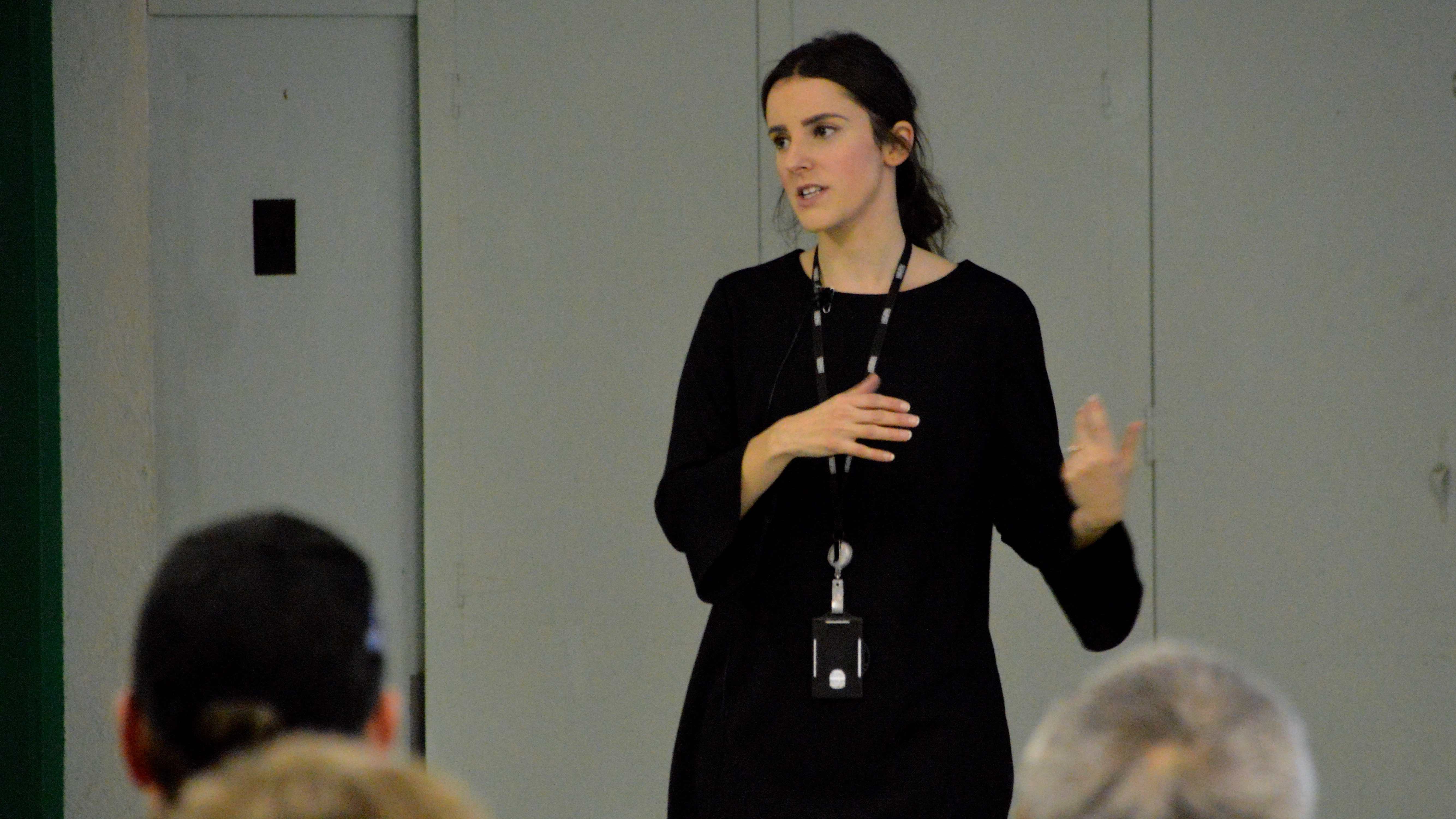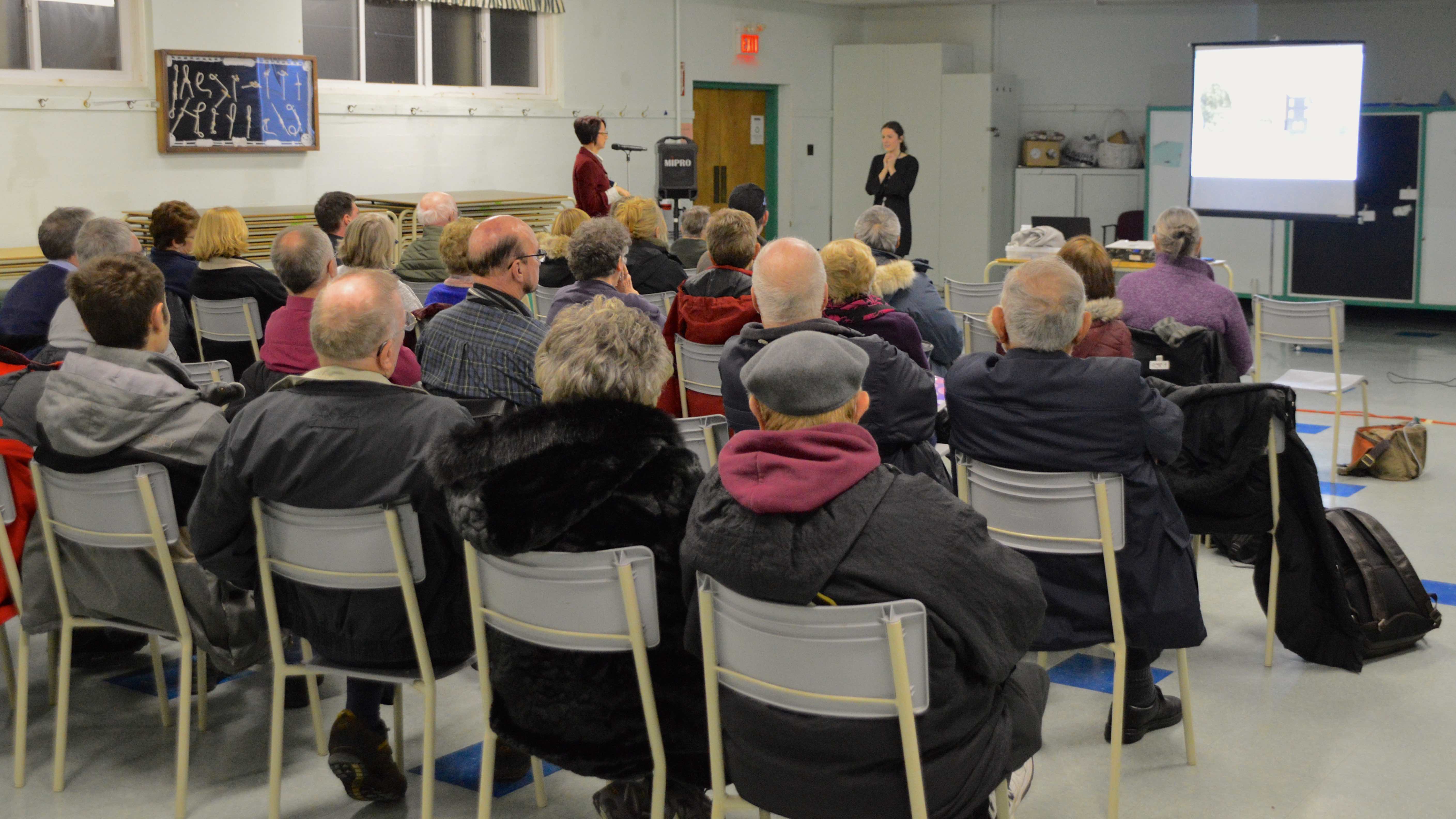Shelter
New women and children’s shelter proposed for Dartmouth
Land owned by St. Luke’s Anglican Church would need to be rezoned

caption
Halifax Regional Municipality planner Brittney MacLean speaking at the public information meeting on Monday.
caption
Municipality planner Brittney MacLean speaks at the public information meeting Monday night.The Halifax Transition House Association wants to build a new shelter in Dartmouth for women and children leaving violent and abusive situations.
The proposal calls for a three-storey, 24-bed shelter next to St. Luke’s Anglican Church at 9 Veterans Ave. But, first, the land needs to be rezoned.
Kenda Riles, programs manager with the association, spoke about the project at a public information session Monday night. She described how Bryony House, the current shelter, is in an old building with several problems.
“Keeping the doors open has been challenging,” said Riles during her presentation.
Bryony House has been operating for about 40 years, but the building was constructed in 1882. Over the past three years, its structural problems have resulted in 17 evacuations and $400,000 in repairs and maintenance. In September 2016 a flood resulted in the shelter closing for three months. Multiple other floods followed last year.
The application for rezoning was put forward to the Halifax Regional Municipality by TEAL Architects and Planners on behalf of St. Luke’s, which owns the property.
Ross Grant, a planner with TEAL, said they were approached by the Halifax Transition House Association around September 2016 with the mission of finding a suitable lot near schools, shopping, pharmacies and a hospital.
It took about a year to find St. Luke’s as a suitable option, said Grant.

caption
Some of the concerns raised Monday night focused on views and property values.About 30 people attended the meeting Monday night. Some voiced their support or concerns, like whether or not the building would obstruct views and bring down property values.
Tom Emodi, principal architect at TEAL, said the building would be constructed into a slope on Tacoma Drive. So when looking at the building from Stevens Road, for example, only about two storeys would likely be visible.
St. Luke’s Rev. Matthew Sponagle spoke in favour of the rezoning and shelter, saying the association’s mission to help people in need is in line with the church’s.
“What we try to do in our world is try to make the world a just place, to make a place of safety and comfort for people,” he said.
Currently, the land is zoned R-3, which is a Multiple Family Residential zoning, but it needs to be rezoned to S or Institutional. An S zone includes facilities like hospitals, schools, community purpose buildings and long-term care centres.
Riles said the Bryony House shelter hosts about 230 people each year, 50 to 70 of which are children. They stay an average of about six weeks, but each case is different.
If the rezoning is approved, the association would purchase the lot and start its project, which would take about 18 months to complete. Grant said it’s expected to cost $3 million, with funds coming from the Canada Mortgage and Housing Corporation.
The Harbour East Marine Drive Community Council has the final say on if the rezoning application passes. The decision is expected to be made at a public hearing at a later date.

R
Ross Grant
J
Julie Lawrence